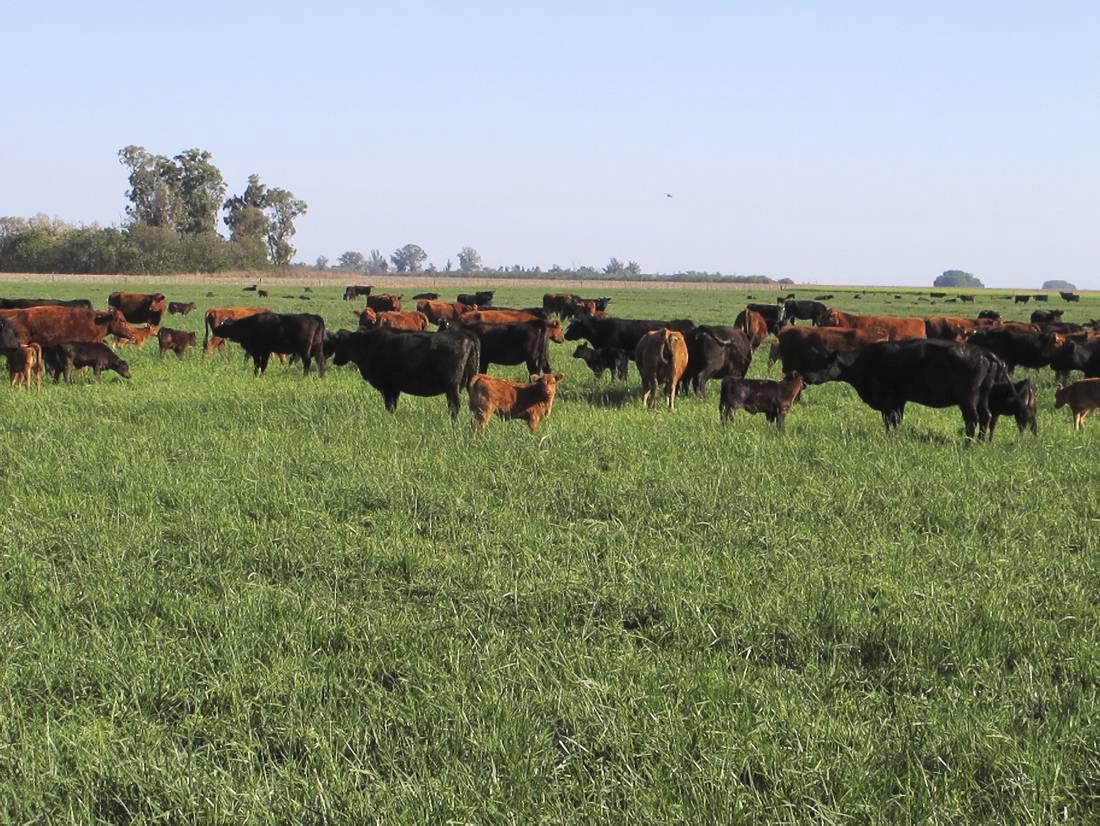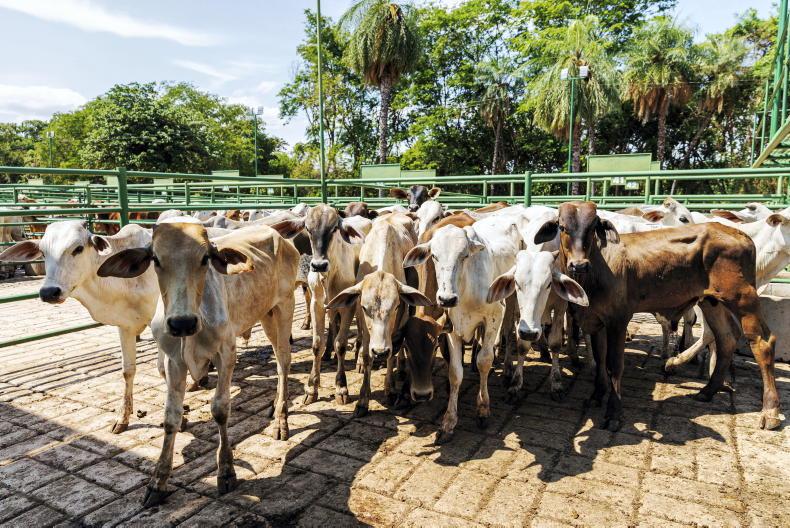There must always be a word of caution when forecasting future trends in beef production. This statement has become even more true in the last decade, with the Irish and EU beef sectors increasingly exposed to global markets.
Policy changes within and outside the EU have the potential to deliver very significant knock-on effects to beef farmers, as do changes in land use. With this in mind, the theme throughout the magazine of discussing what impact the abolition of EU milk quotas and policy changes (at Irish and EU level) will have on respective sectors is very relevant.
However, just because the theme is relevant does not make it easier to form conclusions. Unforeseen events, such as the economic difficulties that have hit consumption in many EU countries, trade policies between the EU, Canada and America or the Russian ban of agricultural imports, are just some examples of factors that can quickly turn forecasts on their head.
This series of articles will look to inform and shed light on likely scenarios or outcomes that might develop, while keeping in mind the impact of policy change and potential for increased land use conversions to dairying.
Global supply in tightening phase
Market fundamentals remain positive for the global beef industry. On the production side, the continuing trend of limited growth, which has been evident for several years, will continue. Global production is forecast to remain largely unchanged at around 68 million tonnes (Mt), only 0.8% more than in 2013. This small increase in world production is being led by developing countries – principally in South America, the Caribbean and Asia – and these are also the main centres of rising demand.
In South America, cattle availability and slaughter has been rising. Brazil, in particular, will account for most of the regional growth, with production projected to rise 3.4% to 9.9Mt in the coming years. The Brazilian beef sector is in an expansive phase, supported by government investment and targeted on-farm improvement in productivity and genetics.
On the other hand, the developed countries are predicted to experience a 1.3% decline in output (to 28.7Mt), mainly attributed to a fall in North American production. This has been due to prolonged drought conditions, which caused a fall-off in the production of calves on the back of a reduced cow herd. Beef output in the US will decline to 1.2Mt, its lowest level since 1994. However, the decline in US output will be counterbalanced by output growth in Brazil and India.
In general, the global beef supply can be described as being in a tightening phase. Most key producing and export regions are already experiencing record tight supplies, with further tightening projected in the coming years. Figure 1 shows the expected share increase of different meat types.
Rabobank analyst Angus Gidley-Baird concluded: “There is largely positive news for the global beef industry as strong demand and tight supply are showing no signs of slowing, pushing prices, in some cases record prices, even higher.”
Tighter supplies, greater demand
In the beef sector, international trade represents 10% of world production. In the coming years, trade flows are expected to increase and to be influenced by production costs, trade policies (tariffs) and sanitary measures. Developments on the global beef trade are crucially important to Irish production, given our high dependency on the export trade.
Despite the fact that global prices are at a historical high, global trade for beef is still projected to grow. This year alone, world beef trade is up by 3.4%, to 9.3Mt, and by 2019, an estimated additional 400,000t of product is projected to be traded on the world market. Much of the expected expansion in global trade is anticipated to come from India, Brazil, Australia and New Zealand.
However, the favourable market conditions for beef are also projected to stimulate greater exports on the world markets from Canada, the EU, Paraguay and Uruguay, despite supply shortages in these regions.
Growth will continue on the demand side. This will mainly come from Asia, powered by rising incomes and increased urbanisation.
Growing global marketplace
Asia will drive beef demand, with consumption there anticipated to rise by 8% over the next five years. Asia is the key destination for the global beef trade and it now accounts for nearly 35% of the world trade. By 2019, Bord Bia anticipates the region is likely to increase its footing and account for around 45% of the global trade.
China, in particular, is expected to record a significant increase in imports, by approximately 66%, and confirm its position as the main world market for beef. This is stimulated by rising incomes and growth in meals outside the home. Total imports (primal or non-primal cuts) could exceed 1.1Mt in 2014, 6% more than last year, with a rising year-on-year trend.
Indeed, Chinese imports of beef showed a fourfold increase during the 2009 to 2013 period, underlying its growing importance for world trade. Interestingly, Chinese import growth alone is likely to absorb much of the rise in global output, which will help to deliver a well-balanced global market in the years ahead.
Asia is fast becoming a high-value marketplace, with the retail price of beef cuts escalating. In some cases, muscle cuts are now valued on par with or above their equivalent EU value level. As a high-value market, Asia may offer enhanced opportunities for EU exporters in the future years, once access is fully granted.
However, it seems likely that the Asian market will receive a more intensified focus from other suppliers, most notably from South America and Australia, which already have a strong presence established there – Brazil already has eight beef plants approved for Chinese shipments.
Ultimately, the growth and export focus on Asia from the key global exporters will, in turn, increase the competition for beef in other markets and create opportunities for Ireland in less significant markets.
Brazil beefing up
In response to rising global beef demand, Brazil, the world’s largest exporter, has moved to expansion phase, aiming to enhance its presence over the next decade in higher-value export markets.
Brazilian production in 2019 is expected to be around 3% or 250,000 tonnes higher than 2014. With further growth expected in domestic consumption, Brazilian exports are expected to increase by less than 10% between now and 2019.
Driving forces behind export growth are lower feed costs and greater availability of cattle for slaughter, stable domestic cattle prices and the ongoing depreciation of the Brazilian currency. These factors will likely make Brazilian beef highly competitive in the world market.
On the trading front, the anticipated growth in Brazilian beef exports will see greater shipment pulled towards the growth areas of Asia, Russia and the Middle East, and a continued reduced focus on the EU marketplace, which is a positive trend from an Irish beef perspective.
By global standards, though, the Brazilian beef industry remains relatively inefficient with below-average sector productivity – suggesting major potential may exist for improvement. Consequently, the expansion of the Brazilian cattle herd is supported by higher investments, coupled with recent government initiatives targeted towards improvements in productivity and quality.
The Brazilian beef sector is intensifying the systems of production, mainly in the finishing stage, though with greater incorporation of cattle feedlots in the production cycle. Feedlot use, lower feed costs (uniquely placed due to unmatched potential for expanding corn and soyabean production) and more technically efficient production systems, will allow cattle to be slaughtered younger and heavier, resulting in productivity rises, as well as improved product consistency and quality.
Currently, less than 10% of Brazilian beef is raised in feedlots. Rabobank estimates feedlot capacity to double to 4.5 million head, thereby increasing fed-beef production by approximately 2.5Mt per annum by 2023. This will require a capital investment of around US$250m to $500m to increase feedlot capacity.
EU beef now on global stage
The last two years were undoubtedly difficult on the home and EU markets, while positive developments were taking place in the global beef market. Weaker market demand and lower consumption, along with a recovery in beef stocks, have resulted in a declining price trend across all the main EU beef producers.
Since the historical highs of June 2013, prices paid at EU processing plants are back on average 10% to 15% in comparison with the same period last year. That said, in our key export markets, signs of a recovery are imminent, with a strengthening in beef price both on the British and EU markets. This is also a potential indication that the fall in Irish price has bottomed out and will soon begin to follow the EU market trend.
While Irish and EU prices were on a downward trend, global markets were strengthening. Indeed, for several months now, world prices have increased month by month. These are fuelled by supply shortfalls in the US and strong demand in Asia. Between 2012 and 2014, beef prices, in the principal beef exporting countries, have increased by 25% to 35%.
The future outlook for beef is quite positive. On the global stage, the continuation of supply and demand imbalance should facilitate the ongoing upward trend in world beef prices, albeit at a slower pace over the next five years. The strong global trade will help underpin and boost the EU market in the coming years. Additionally, as the Eurozone economies continue to recover, there is an improving outlook for beef demand and price. This is due to the combination of stable supply, continuing strong export demand and global competition for beef and relatively high-priced competing proteins. Collectively, these will help to stabilise EU beef consumption levels.










SHARING OPTIONS